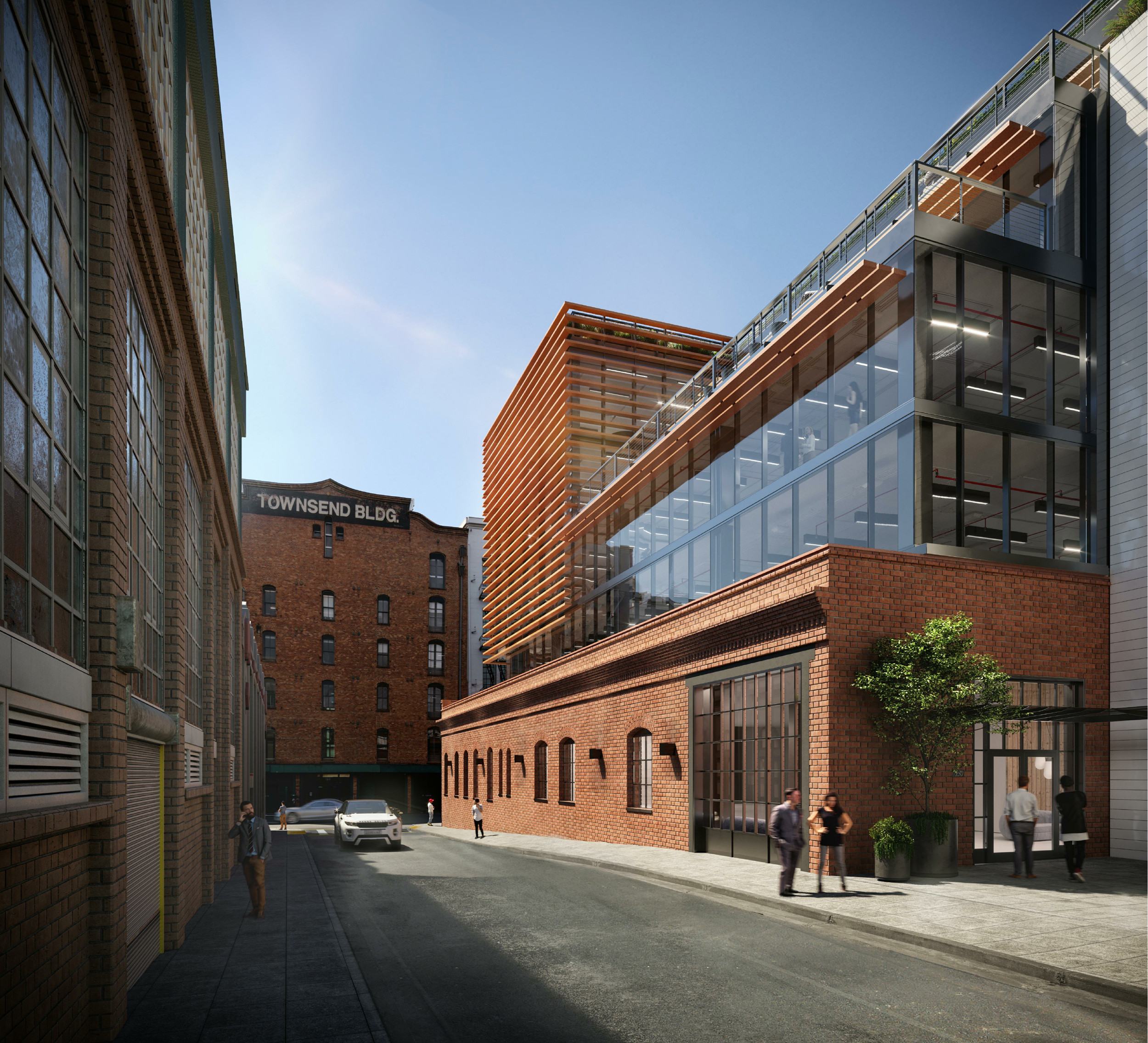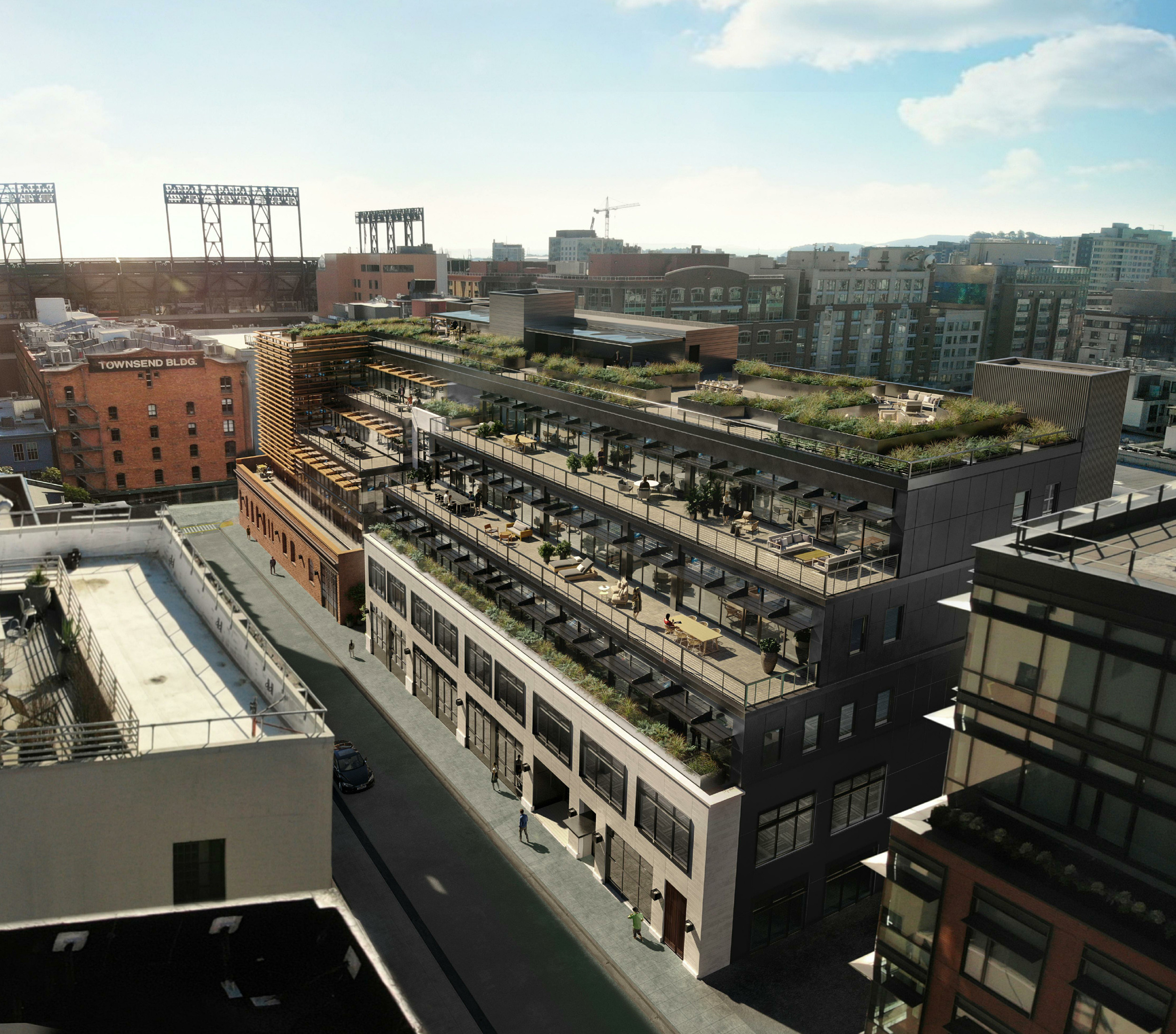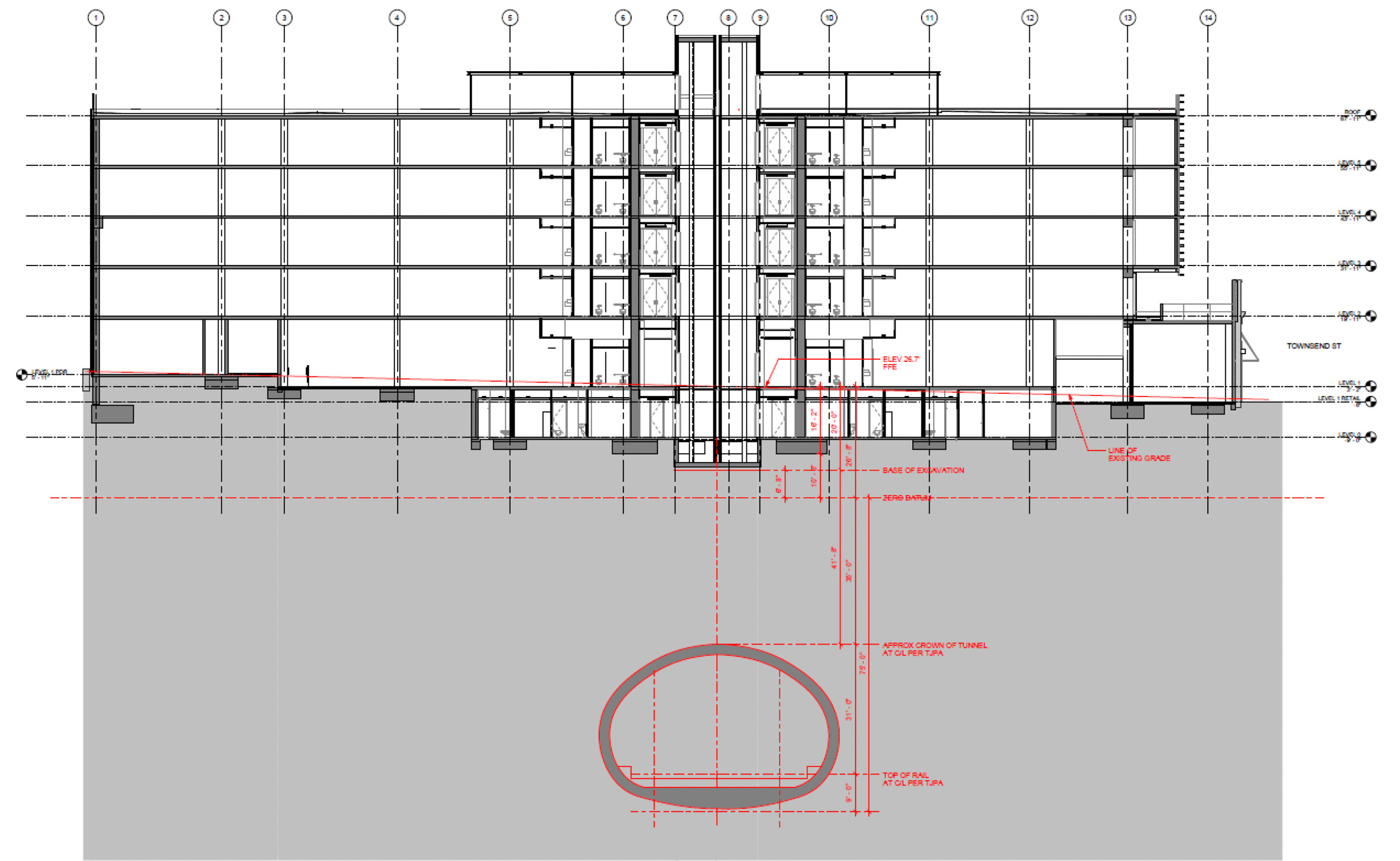The proposed redevelopment of 130 Townsend Street in San Francisco’s SoMa district has filed for an extension request. The project, named Ampersand, is a five-story office building that received approval in 2021. Presidio Bay Ventures, the developer, is seeking a three-year extension to the approval’s expiration, reaffirming their commitment to developing this centrally located property.
Presidio Bay acquired the site in July 2019 for $24 million, with initial permits submitted shortly after. While the project was approved in 2021, activity on the Planning Department website was noted in late 2022. When contacted for comment in late 2022, developer representatives indicated that Presidio was “evaluating current market conditions…” to “lower our overall project budget before mobilizing.”
 Aerial perspective of the 130 Townsend Street office development showcasing Stanton Architecture's design viewed from Stanford Road
Aerial perspective of the 130 Townsend Street office development showcasing Stanton Architecture's design viewed from Stanford Road
Despite the delayed start at 130 Townsend Street, Presidio Bay has remained active in San Francisco’s real estate market. Last summer, they purchased 60 Spear Street, an 11-story office tower in Downtown San Francisco, for $40.9 million – significantly less than its assessed property value of over $120 million. Cyrus Sanandaji, Presidio Bay’s founder, has since become a prominent voice advocating for the commercial real estate sector and San Francisco’s post-pandemic recovery.
Sanandaji provided YIMBY with a statement regarding their strategy for the Ampersand project at 130 Townsend Street:
“The current dynamics in the office market reinforces our thesis that there is a significant flight to ‘experience’ unfolding, resulting in a ~12% vacancy rate for trophy, new construction and premium assets, while the overall market approaches a 40% vacancy rate. Ampersand (comprising 130 Townsend and 50 Stanford) has been designed and entitled as a differentiated office campus poised to meet this heightened tenant demand upon completion. We are actively collaborating with various city agencies and local stakeholders to extend our approvals and prepare the project for groundbreaking in the near future, once the macro interest rate environment stabilizes.”
San Francisco’s office vacancy rate has experienced a dramatic increase. After reaching a historic low of 4.7% in the summer of 2019 (compared to 9% in March 2018), the situation has shifted considerably. Following the Great Recession, the city’s vacancy rate peaked at nearly 18% in the summer of 2010.
According to Jones Lang LaSalle data published by the City, San Francisco’s office vacancy rate reached 32.4% in March of this year. CBRE estimates total office availability, including subleases, is even higher at 38.7%. Simultaneously, construction costs have increased by approximately ten percent since 2022, according to the State Department of General Services.
 Overhead rendering highlighting the 130 Townsend Street project's Stanford Building and surrounding SoMa neighborhood
Overhead rendering highlighting the 130 Townsend Street project's Stanford Building and surrounding SoMa neighborhood
The Ampersand development at 130 Townsend Street will consist of two buildings. The existing two-story brick structure, formerly the Inglenook Vineyard Agency, will be adaptively reused. Renderings show a modern four-story addition designed by Stanton Architecture, featuring terracotta louvers, rising above the historic structure.
The Stanford Building, located at 50 Stanford Street, will be constructed on a current surface parking lot. The lower two floors will feature a faux-historic facade using glazed terracotta and metal panels. The upper three levels will be clad in metal panels, similar to the 130 Townsend Street building.
 Illustration showing the proposed 130 Townsend Street development and its proximity to the Transbay tunnel in San Francisco
Illustration showing the proposed 130 Townsend Street development and its proximity to the Transbay tunnel in San Francisco
The half-acre site of 130 Townsend Street is strategically located one block from Oracle Park, one block from historic South Park, and two blocks from the San Francisco Caltrain Station. The site may also be situated above the future tunnel connecting Caltrain’s existing Terminal to the Transbay Transit Center. While tunnel construction was initially projected to begin in 2025, the timeline appears uncertain.
